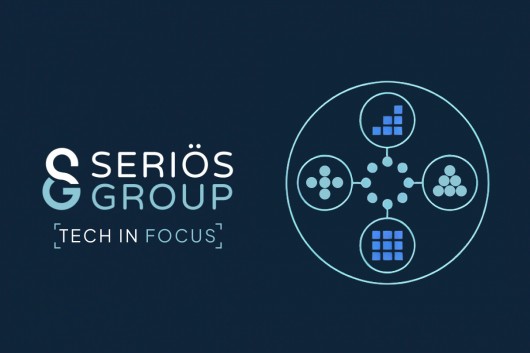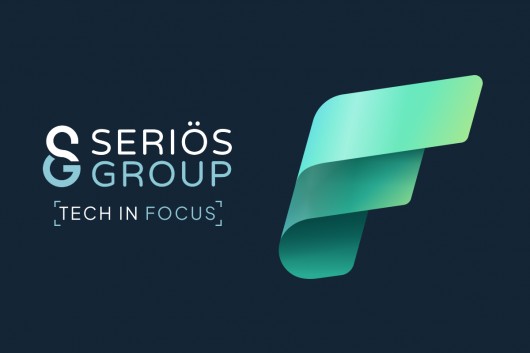Insights
The 8 Must-Haves For Data Governance

- Category
- Blog
- Date published
- 02.07.2025
- Written by
- Adam Brown, Head of Data Strategy and Architecture at Seriös Group
Data isn't just a by-product of your business operations, it's an asset. It’s what gives your organisation insight, drives efficiency, supports compliance and is the basis for strategic decisions. But without clear governance, data becomes a liability: inaccurate, inaccessible, inconsistent or even non-compliant.
To get value from data, you need structure, ownership and clear outcomes. Whether your focus is regulatory compliance, reliable reporting, or enabling AI and analytics, these eight deliverables form the foundation of effective data governance.
What Should Your Data Governance Deliver?
Here’s what an effective data governance initiative should include:
A clear understanding of your current state
A documented view of your data landscape
A strategic governance approach backed by leadership
Defined roles, responsibilities and an operating model
Practical data policies, standards and training
The right tools for visibility and control
Continuous monitoring of data quality
Metrics and reporting to prove it’s working
1. Readiness Assessment and Gap Analysis
Before launching any governance programme, it’s essential to understand your starting point. A readiness assessment reviews your current data maturity, literacy, ownership structures, policies and culture. The aim isn’t to be perfect, it’s to be honest. This insight helps shape a realistic roadmap, tailored to your organisation’s strengths and challenges. Acknowledge where you are, not where you hope to be.
2. Documented Data Landscape
A documented data landscape provides a comprehensive map of your data estate. Without it, organisations lack the necessary visibility to manage their data effectively. A centralised, documented view of your systems, data models, flows and lineage improves visibility, supports planning and reduces risk. Establishing this baseline is critical for managing change, aligning stakeholders and tracking progress over time.
3. Governance Strategy with Executive Sponsorship
Governance needs direction, and visible support from the top. A good strategy aligns with broader business goals and includes a clear vision, principles, outcomes and roadmap. Executive buy in is critical to secure resources, remove roadblocks and demonstrate commitment. When governance is framed as a business enabler and not a compliance requirement, it has staying power.
4. Governance Framework
The framework formalises how governance operates day to day. It defines roles like data owners, custodians and stewards and sets up governance committees with clear Terms of Reference. This should be underpinned by a Data Management Operating Model (DMOM), a structure that supports how data is governed, managed and improved across the organisation.
5. Data Policies and Standards
Policies turn strategy into action. They define how data should be classified, secured, retained, shared and integrated. But policies must be realistic and regularly updated. Make them practical and supported by ongoing training and awareness initiatives. Governance only works when culture and behaviour align with policy.
6. Implementation of Governance Tools
Modern governance is too complex to manage manually. Tools such as business glossaries, data catalogues and data dictionaries allow teams to discover, understand and trust the data they rely on. Features like metadata management, lineage tracking and data classification increase transparency, support compliance efforts and enhance collaboration between business and IT. If data cannot be found, trusted, or explained, it should not be used.
7. Automated Data Quality Monitoring
Data quality issues undermine confidence in your insights. Automated testing and monitoring reduce manual effort, catch issues faster and make it easier to trace and resolve problems at their source. Automated and AI-powered checks can detect anomalies, validate reference data and monitor pipeline consistency in real time, supporting scalable, always-on governance.
8. Monitoring and Reporting
Effective governance must demonstrate its value and evolve over time. Establish key performance indicators, such as issue resolution times, data quality scores and policy compliance rates, and track them consistently. Interactive dashboards and scheduled reports provide transparency for senior stakeholders and ensure governance remains aligned with evolving business objectives.
Common Pitfalls to Avoid
Even with a solid roadmap, governance can stall if you fall into these traps:
Trying to do everything at once: Prioritise and build iteratively.
Leaving it to IT: Governance is everyone’s responsibility.
Ignoring data maturity: Applying complex governance models to a low-maturity environment can cause issues. Develop your approach to your organisation’s current capabilities and scale.
Under-communicating the ‘why’: Governance initiatives often fail due to poor engagement. Help people understand the value, so they know the why.
Choosing tools before defining needs: Don’t lead with tech. Start with business goals, then find tools to support them, not the other way around.
Scalable Governance, Real Results
Data governance isn’t a theoretical exercise, it’s a practical discipline with real deliverables. Done right, it helps you move faster, not slower. It builds trust in your data, aligns teams and unlocks value. Begin with your purpose, deliver value early, and grow sustainably. We can provide our skills and expertice to support you in developing effective data governancev. Get in touch to find out more.





